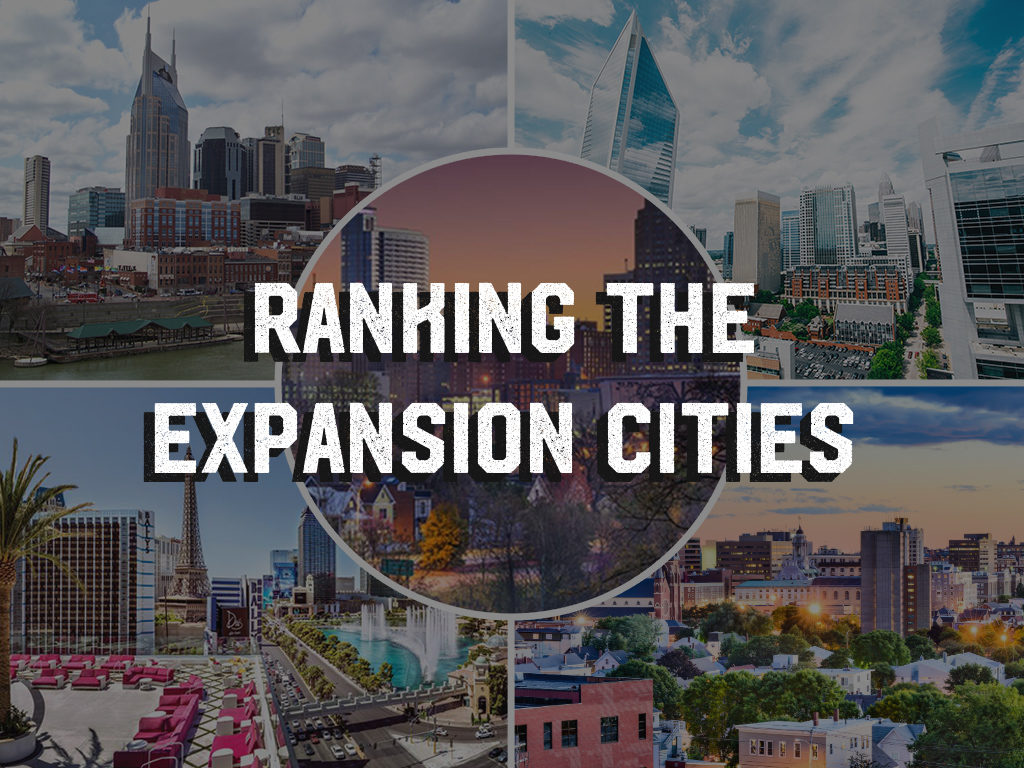
Ranking Raleigh against other possible MLB expansion cities
MLB expansion has been a part of the MLB’s ‘Collective Bargaining Agreement’ discussions over the past few years and Commissioner Rob Manfred has begun talking about the increasing likelihood that two more teams will eventually be added. It’s also becoming more and more apparent that the Tampa Bay Rays and potentially the Oakland A’s could be looking to relocate as well.
When asked about potential cities that could add an MLB team, Manfred has reeled off a few cities that he believes would be most viable. Those cities are Charlotte, Nashville, Las Vegas, Portland, and Montreal. Montreal had The Expos from 1969 to 2004 before moving to Washington DC and becoming the Nationals. They are the one city that has proven their MLB viability over the long term. But what about the rest? We decided to take a look at the statistics to see which of the other four US cities is the most viable and how Raleigh and the Triangle fit into the mix.
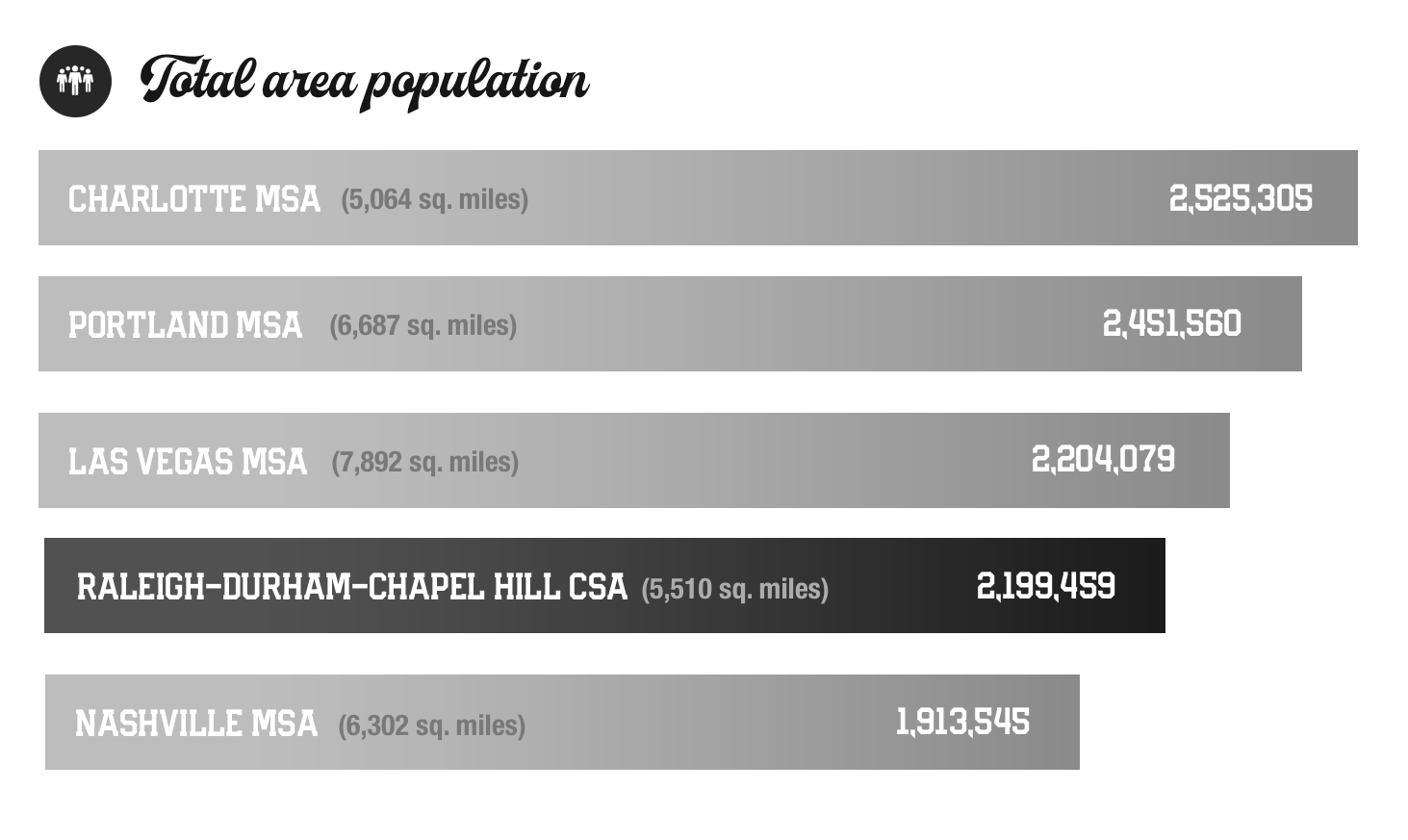
POPULATION PER SQUARE MILE
1) Charlotte MSA: 499
2) Raleigh-Durham Chapel Hill CSA: 399
3) Portland MSA: 367
4) Nashville MSA: 303
5) Las Vegas MSA: 279
Population is often the first metric looked at when viability for a professional sports franchise is discussed. While it’s certainly an important number, it has to be calculated correctly, taking into account the entire surrounding area that a team would pull from. The Triangle presents a unique case since it’s a compact area comprised of three separate cities. This is why the best way to calculate it in our region is by using our CSA (explained here) and then comparing it to other cities and metro areas that cover nearly the same square mileage. Taking that into consideration, you see that while our area isn’t the largest on the list, it is certainly big enough to warrant putting us in the conversation. It’s also worth noting that no matter how you slice it, it’s almost impossible to show a one to one comparison based on census numbers. That’s why we’ve also broken this list into ‘population per square mile’ which is a way to show the true density of these areas. When you do that, suddenly Raleigh-Durham jumps to near the top of the list.
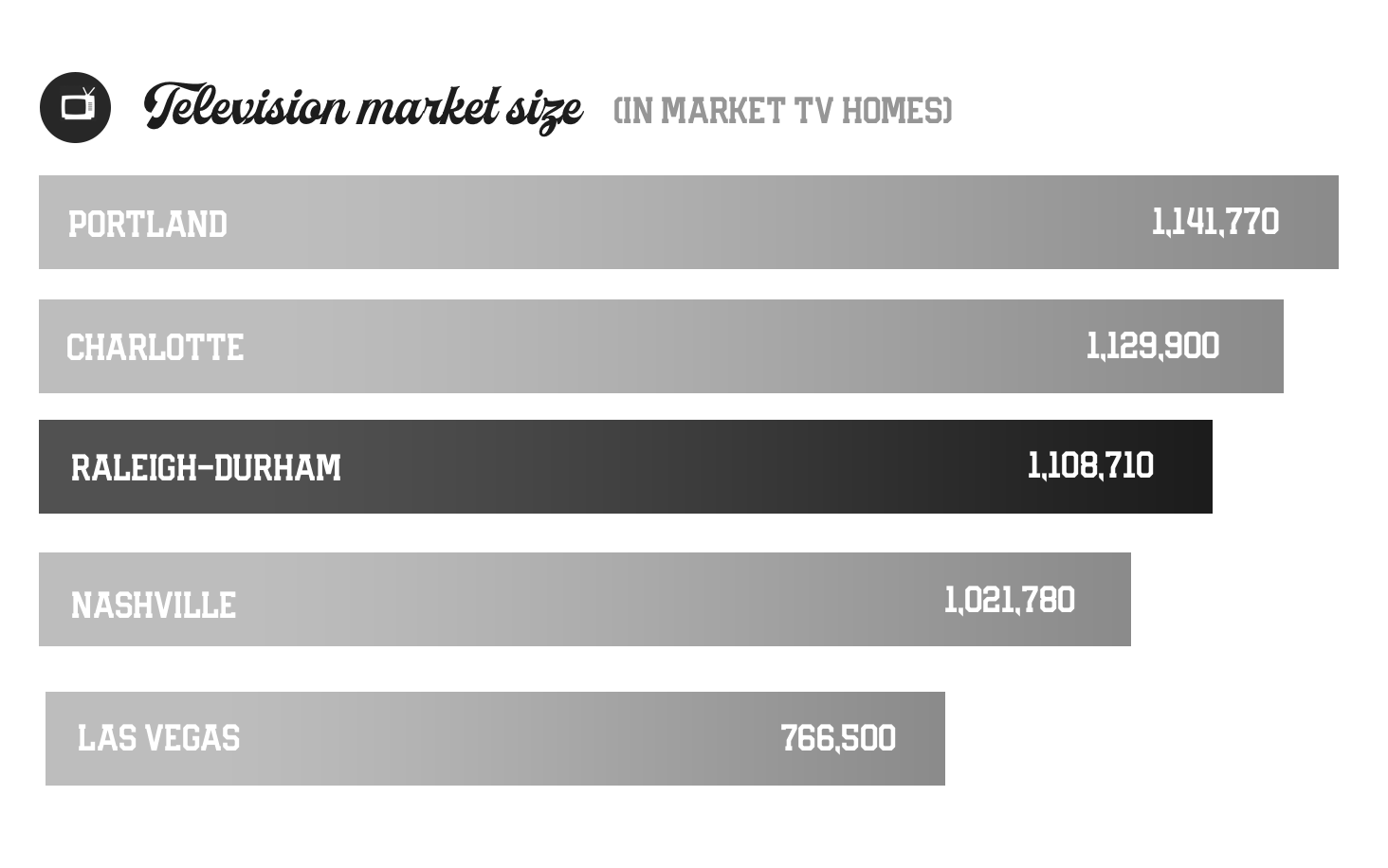
Putting butts in seats is one thing, but having a strong TV market is nearly as important. Raleigh ranks 3rd amongst this group, however, it is the largest TV market in the nation that does not have a locally or regionally broadcasted MLB team.
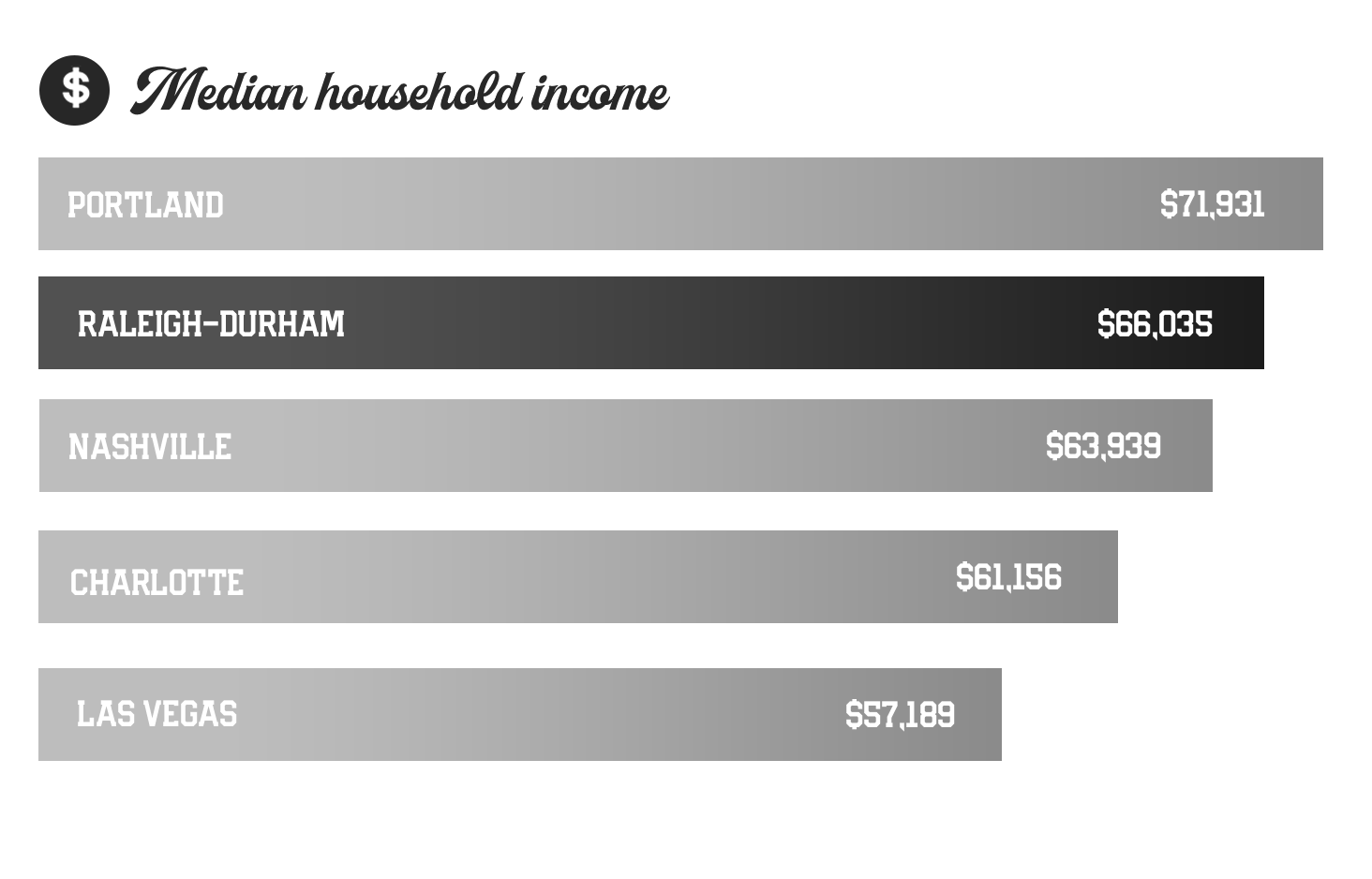
Having a viable population and the TV market is necessary when discussing MLB viability, but you can’t support a team if your area doesn’t have the money. Looking at median household income, you can see that Raleigh is trailing Portland by a good bit, however, you have to take into account that the cost of living is approximately 33% higher in Portland. When you calculate ‘cost of living’, it’s actually Raleigh residents who are likely the ones with more disposable income to spend on entertainment per year.
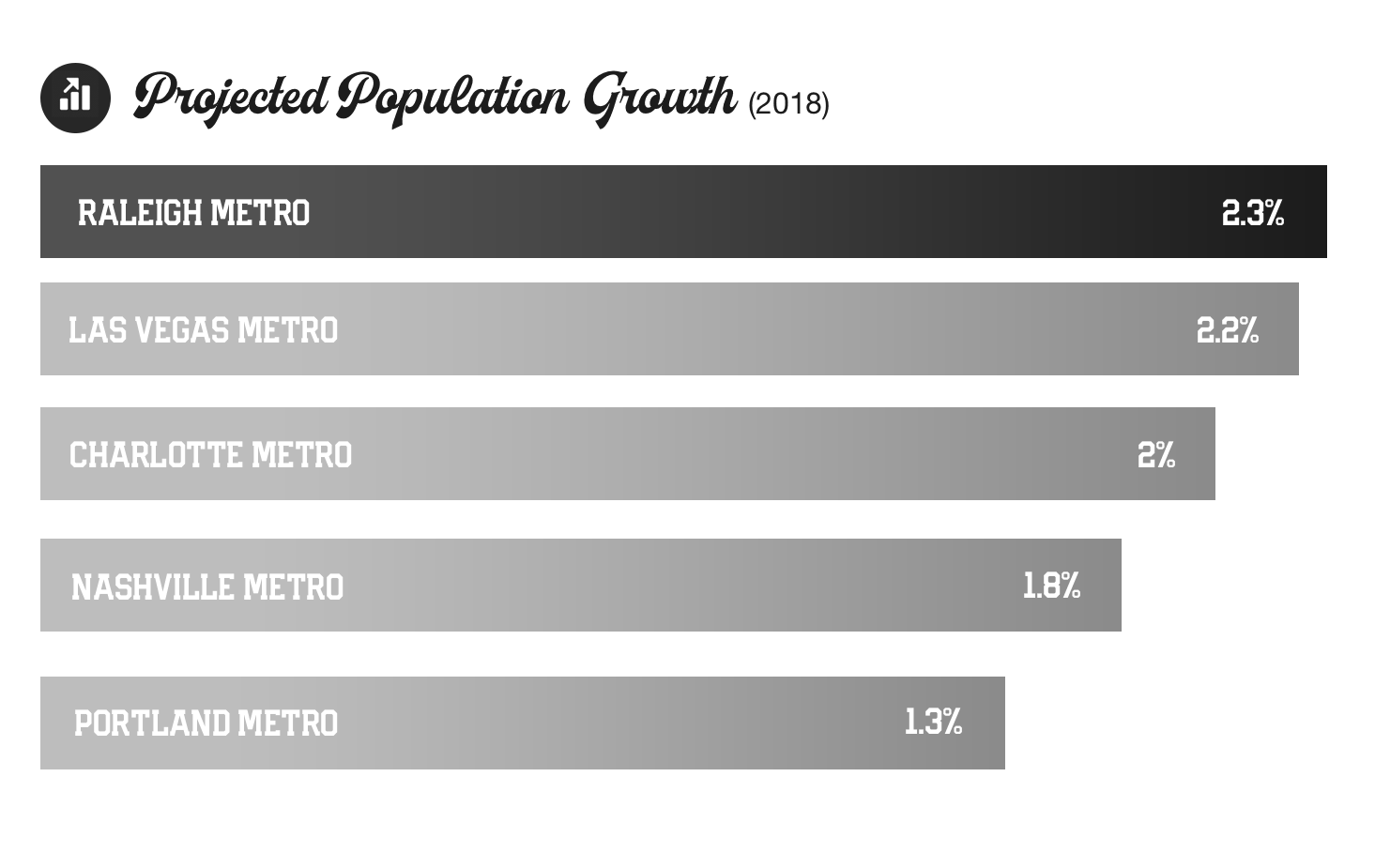
MLB expansion isn’t going to happen tomorrow. The march towards getting an MLB expansion team (or getting a team that is poised for relocation) will take years. This is why today’s population, TV market, and income numbers should just be starting points when you talk about long-term viability. An important metric to look at is projected growth of a region, and when you pull those numbers you see that none of the potential expansion cities are growing as fast as the Raleigh metro.
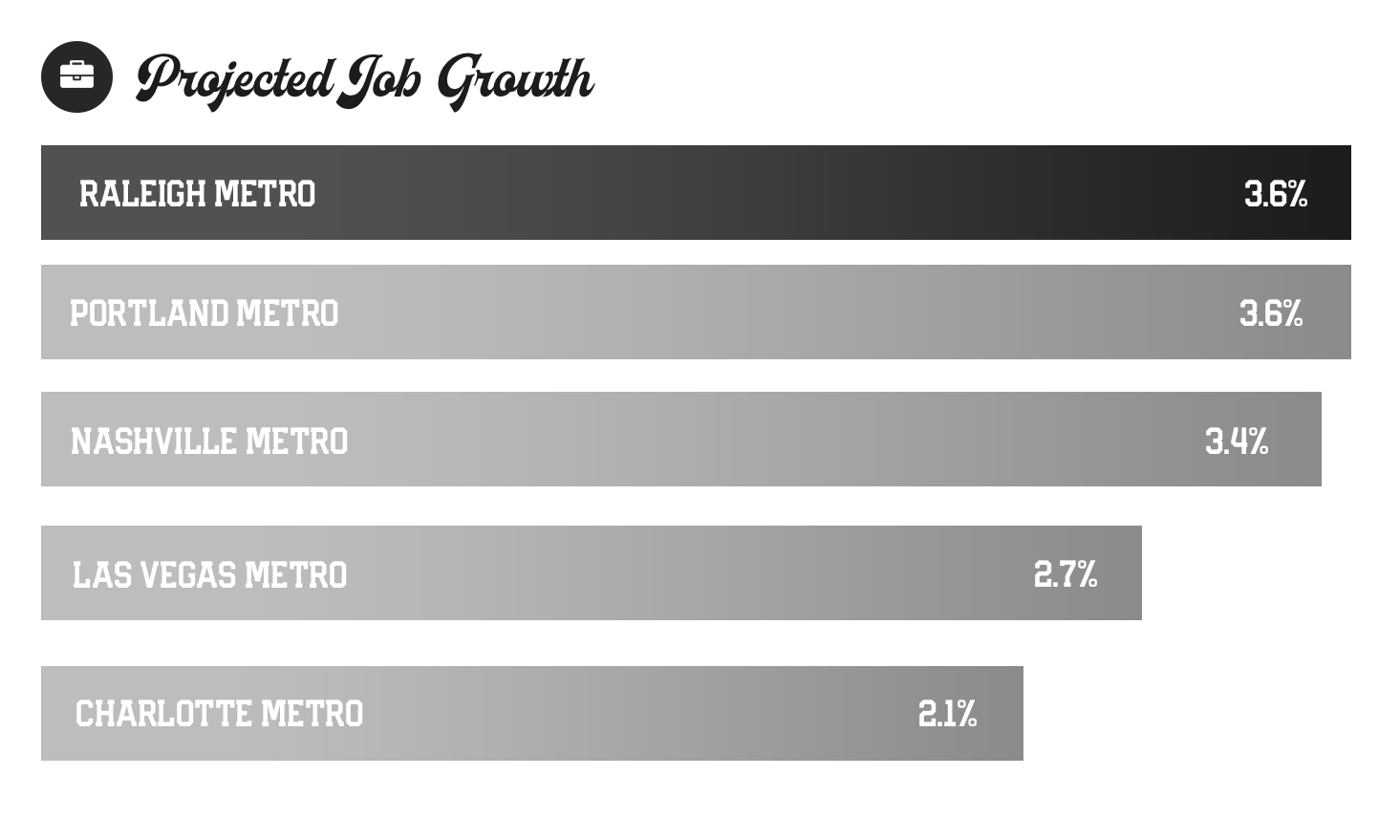
It’s one thing for your area to be growing in its population numbers, but it’s another thing to have a growing and thriving economy. Raleigh ranked #1 of the American expansion cities in terms of job creation in 2018 and the projections for the future of Raleigh’s economy show that no one expects that to slow down.
Statistics for this article came from Inc.com’s latest ‘Surge City’ data where Raleigh (and the Research Triangle) ranked #3 overall.